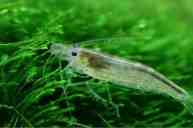Fish wash up on the beach all of the time, but rarely are they fish that live thousands of feet below the ocean's surface. Yet, that's what happened in Oregon recently.
The historic Seaside Aquarium shared images of a deep-sea angler fish called the Pacific football fish found by a beachcomber at Cannon Beach, located about 80 miles west of Portland.
In a Facebook post dated May 18, the Aquarium said the Pacific football fish — officially called the Himantoliphus sagamius — lives roughly 3,300 feet underwater and in complete darkness.
The Pacific Football Fish
"(T)hese fish are rarely seen. In fact, only 31 specimens have been recorded around the world," the Aquarium said, adding that they've been found in New Zealand, Japan, Russia, Hawaii, Ecuador, Chile, California, and now Oregon.
"Little is known about their life history but what is known is unusually fascinating," the Aquarium said. Like other angler fish, "they use a light that shines from a phosphorescent bulb on their forehead to attract prey."

A Pacific football fish that washed up on Cannon Beach, Oregon, in May 2024. Credit: Seaside Aquarium/Facebook
In the shared images, the fish looks rotten and decaying — like an orc from Lord of the Rings — but that's just how they look. The Fish Base Project describes the fish as "leathery."
The Aquarium explained that food at the depths football fish live is sparse, so they're not picky eaters. "They eat anything that can fit into their mouths," the Aquarium said.
Yet, the males of the species are more than bottom feeders. They're 10 times smaller than females, which actively hunt, so they fuse themselves to them and live more like parasites.
"They lose their eyes and internal organs, getting all their nutrients from their female partners," the Aquarium said. In return, females get a steady source of sperm. But exactly how the males find the females in the pitch dark is still unknown.
Around this time last year, another deep-sea fish washed up on Oregon's shores. Scientist discovered several lancetfish and they know why. While the predatory fish migrates as far north as Alaska's Bering Sea, it likes tropical and subtropical areas.




